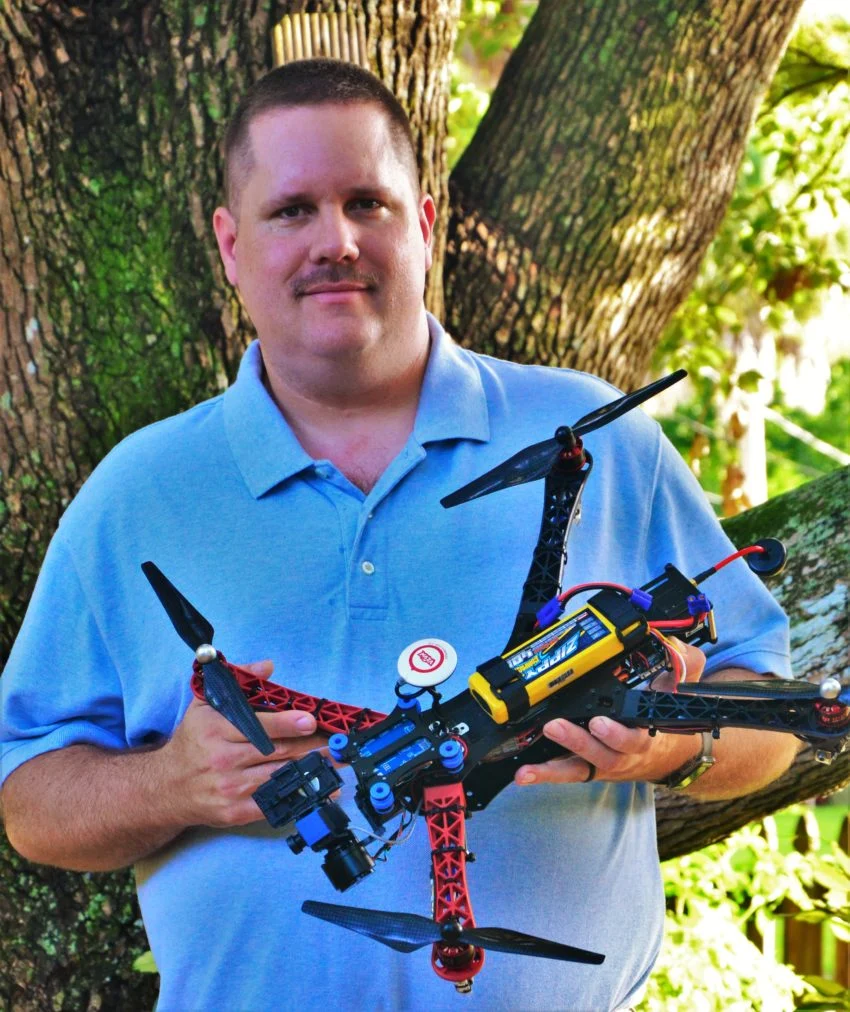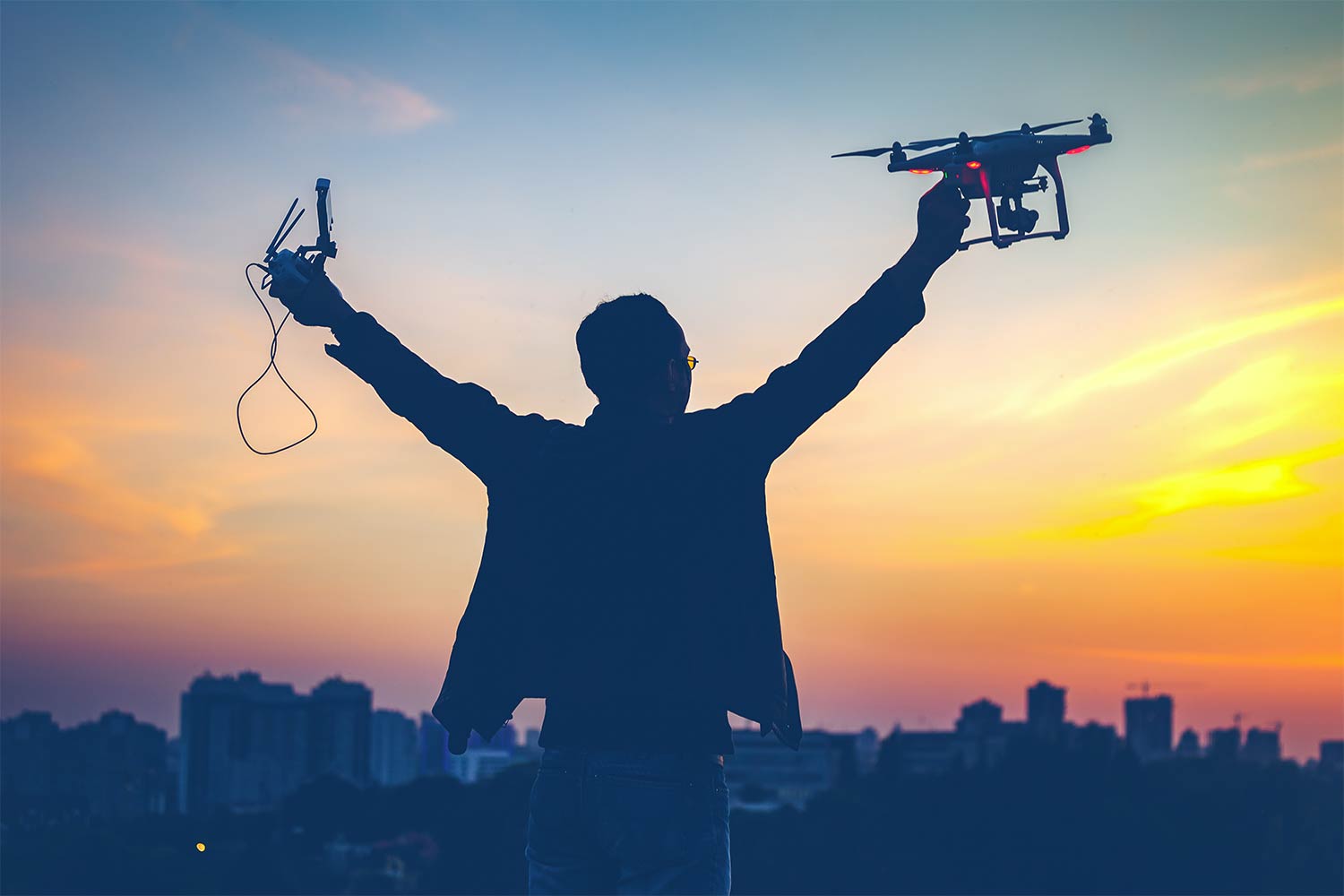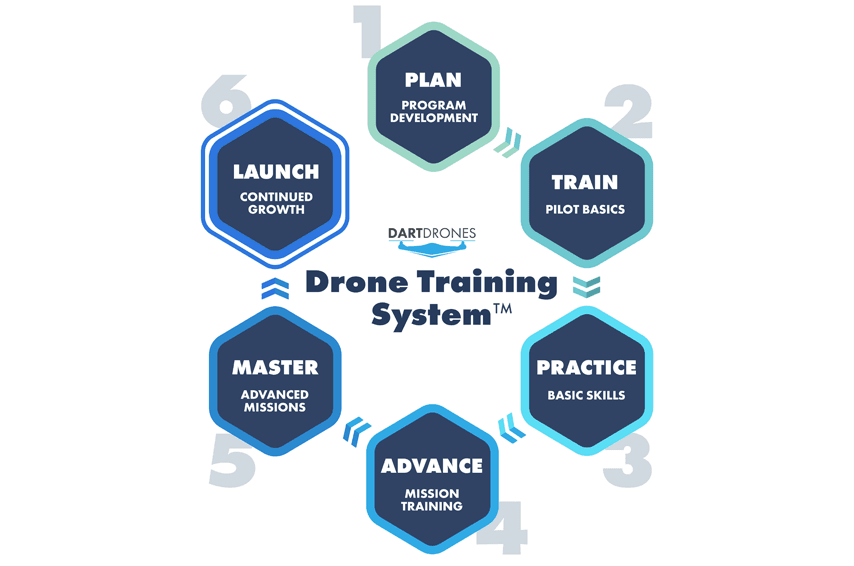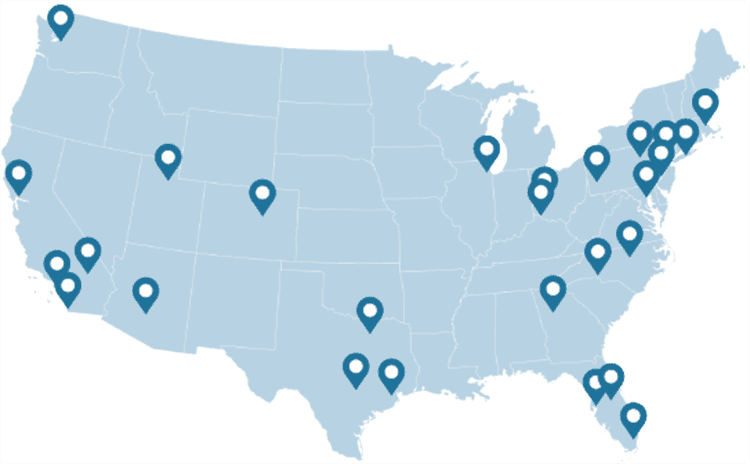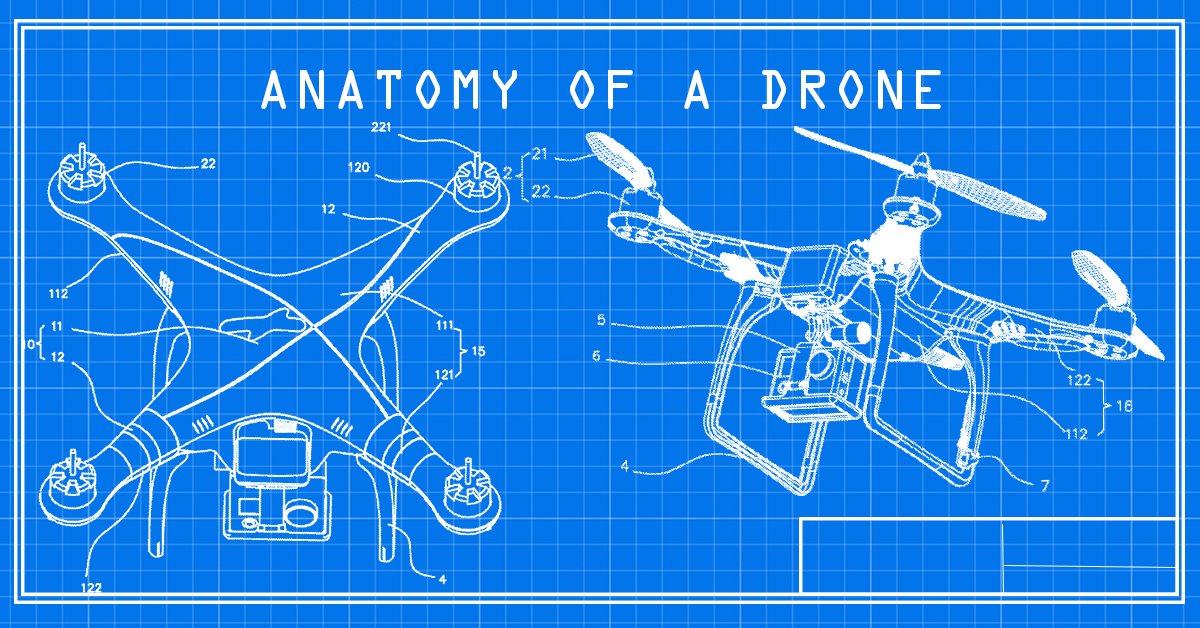
What is a Drone Made of? Drone Anatomy Basics
What is a drone, and what are drones made of? The general public is becoming more and more familiar with drones, thanks to a booming consumer market and mass media coverage. But basic drones concepts are still unclear for many newcomers, thanks to widespread conflation surrounding drones types and their uses. Find out exactly what a drone is with this simple, easy-to-understand breakdown of definitions, including key drone parts and components:
What is a Drone?
Technically speaking, the terms Unmanned Aerial Vehicle (UAV) and Unmanned Aircraft System (UAS) are the proper terms for describing a “drone”. The term “drone” has become the common term that most people would call a multirotor. Specifically, it denotes a remotely piloted vehicle that has some ability to fly autonomously; this includes fixed wing aircraft. For the purpose of this article we will focus on multirotor type aircraft. Multirotors may include tri-copters, quadcopters, hexocopters, and octocopters. There is a wide range of different motor configurations.
Check out this short video “What is a Drone” excerpt from the DARTdrones Drones 101 course on the difference between the words “drone”, “UAV”, and “UAS”.
What is a Drone Transmitter?
The “transmitter” is the controller that the operator uses to operate the aircraft. It will typically have a left and right stick control with various other buttons and switches to control different functions. Some transmitters are programmable and assignments can be made to the sticks, buttons, and switches. One important setting is the transmitter “mode.” In the United States, mode 2 is the most common. This assigns the throttle and yaw control to the left stick, and pitch and roll to the right stick. Due to the nature of muscle memory, even a very experienced pilot may crash when the aircraft does not respond as expected if the mode is unknowingly changed to one they are not familiar with. Review your owners manual for specifics that apply to your transmitter operation and settings.
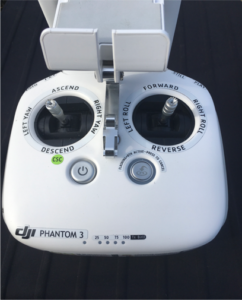
A set of decals for your transmitter can make remembering the controls easier. Photo by: DARTdrones Flight Instructor, M. Uleski
What is a Drone Flight Controller?
The Flight Controller is the brain of the drone. It can also sometimes be called an inertial measurement unit (IMU). The flight controller houses the sensitive gyroscopes, accelerometers, and barometric pressure sensors that the aircraft uses to maintain stable flight. They also may receive information from a GPS antenna, compass sensor, and positioning sensors. The flight controller communicates with the receiver that takes commands from the operator using the transmitter. This allows the aircraft to respond to the operator’s input, but also to maintain stability by reacting to the provided sensor data. Some flight controllers have functions that can be programmed by the operator to change the flight behavior.
For additional information on basic flight controls, check out our short video tutorial here:
What do Drone Motors do?
Motors can either be brushed or brushless. Most larger drones will have brushless motors as they provide more power for their size and weight than brushed motors. Brushless motors last longer as they do not have brushes that cause friction and wear out. Brushless motors also respond faster to both operator and flight controller inputs, providing for a more stable drone.
What is a UAS Electronic Speed Controller (ESC)?
ESCs are found on drones with brushless motors. The ESC sends a signal from the flight controller to the motors to control the speed that they turn. This signal may come from either the flight controller sensors, operator input, or a combination of both. ESC’s do get warm during operation so it is very important to make sure the cooling vents on your drone remain clear of debris. A hot ESC is an unhappy ESC that can fail while in flight.
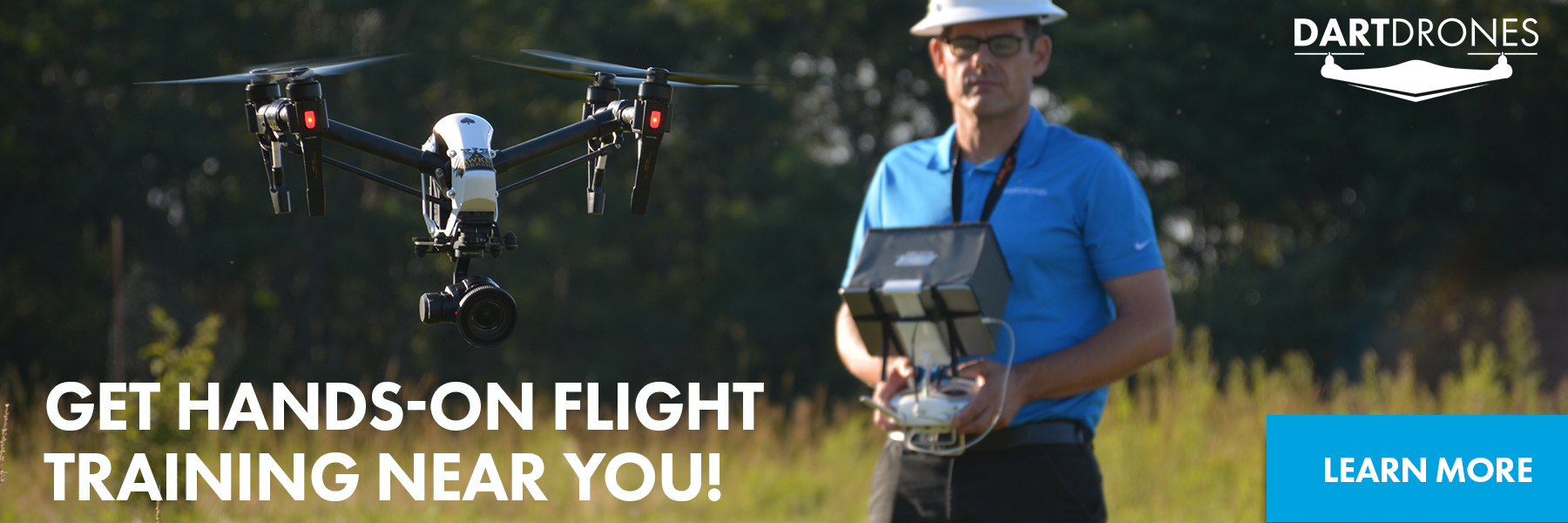
What do sUAS Propellers do?
Multirotors use a combination of propellers that are designed to rotate in opposite directions. Typically the motors will only allow the correct rotation propeller to be installed. But be familiar with the direction that each motor is supposed to turn in the event of a manufacturing defect. If the motor and propeller are correct they are designed to be self tightening. If the propeller is not a quick-connect type, hand tighten only until snug, unless the manufacturer suggests something different. Also use only the propellers that are recommended by the manufacturer. Aftermarket propellers may be available and offer different performance, but a propeller that is not appropriate for your drone can cause a motor or ESC to overheat and fail. Always check your propellers for cracks, nicks, bends, or stress marks prior to installing them on the aircraft. If a propeller is questionable, replace it immediately.
What is a Drone Camera and Gimbal?
Most drones today are designed to carry a camera. For more serious photography and videography, the camera is attached to a stabilizing gimbal mount. Gimbals can be designed as having one, two, or three axes of stabilization. The gimbal is composed of two parts, one is attached directly to the aircraft. This is usually two plates with rubber isolators that reduces vibration from the aircraft itself. The second part is comprised of the brushless motors that are controlled by gyroscopes and accelerometers, similar to those found with the flight controller. The gimbal motors use these sensors to keep the camera in a fixed position, even when the aircraft is maneuvering. The gimbal and camera are precisely balanced and can be fragile, care should be taken to protect them while traveling, or during takeoff and landing.
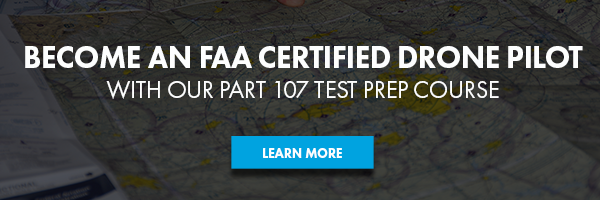
How Long Can a Drone Fly?
Most batteries for today’s drones will be lithium polymer, or more commonly called a “LIPO.” These batteries have a very high energy density for their weight. You will hear several terms used with batteries including the cell number, capacity, and “C rating.” The cell number designates the voltage. A single LIPO cell is 3.7 volts and will be designated as a 1S battery. A 2S battery will be 7.4 volts, 3S 11.8 volts, and so on. The battery capacity is expressed in milliamp hour (mah), such as 3000 mah. The larger the number, the more capacity, or “fuel”, the battery has available. The “C rating” designates how fast the battery can discharge. This is important as making a battery discharge beyond its ability causes an extreme amount of heat and can damage the battery or your drone. Be familiar with the battery that your drone requires. For ease of use, most companies have developed proprietary batteries that will only fit in a few specific models. Always inspect your battery for damage and puffing prior to use and only recharge using the manufacturers recommended charging equipment.
What is a Drone Firmware Update?
Last, but not least, is the firmware for your drone. Some drones allow the operator to update the firmware that the drone uses when the manufacturer releases a new version. The new firmware may fix issues with the previous version, make improvements, and add additional features to the drone. If the manufacturer of your drone releases firmware updates make sure that they are uploaded and your drone is current prior to flying.
For more on Key Terms to know to learn how to fly a drone, check out this DARTdrones short video:
Now you have an idea of the basic components of your drone. Be sure to review the owner’s manual for additional information and recommendations for the make and model that you are going to fly. We hoped this article helped the next time someone asks you “What is a Drone?”
About the Author
Mike Uleski is a DARTdrones Flight Instructor based out of Daytona Beach, Florida. Michael has been an aviation enthusiast from a very young age. He earned his private pilot’s license before graduating high school at the age of 18. Michael continued his education at Embry-Riddle Aeronautical University where he graduated with a Bachelor’s degree in Aeronautical Sciences, and a commercial pilot certificate with ratings for instrument flight, single engine, and multi-engine aircraft. He enjoyed working in the aviation industry for 7 years as a research and development project manager, designing products for aftermarket aircraft upgrades. He has extensive experience, both flying and maintaining, general and business aviation aircraft. Additionally, he has over 17 years of experience building and flying remote controlled aircraft, including fixed wing, helicopters, and multi-rotors. Currently, Michael is a patrol division Sergeant with a public safety department in the Daytona Beach area, and is cross trained as a law enforcement officer, firefighter, and EMT. He is very enthusiastic about the development of UAS technology and future uses for public safety.
About DARTdrones
DARTdrones is the national leader in drone training with the best flight instructors in the industry. We offer classes both online and in-person throughout the country. All of our flight instructors are manned aircraft pilots and certified drone pilots. Our team of experts include FAA Certified Flight Instructors, military veterans, Blackhawk helicopter pilots, commercial airline pilots, and a curriculum developer of one of the Navy’s drone programs. Our classes include:
- Part 107 Test Prep – Learn to pass the FAA’s Part 107 Airman Knowledge Exam with our in-person or online Part 107 Test Prep Course.
- Drone Pilot Training – Learn to fly your DJI Phantom or Inspire in this hands on flight training class.
- Starting a Drone Business Under Part 107 – Learn the ins and outs of starting your own drone business including Developing Your Drone Business Strategy, Finding Customers, Business Operations, Legal Considerations and Liabilities, and Drone Insurance.
- Custom Training – Our expert can come to your group for custom training. We train corporate groups, small team, police departments, fire departments, and government entities.

